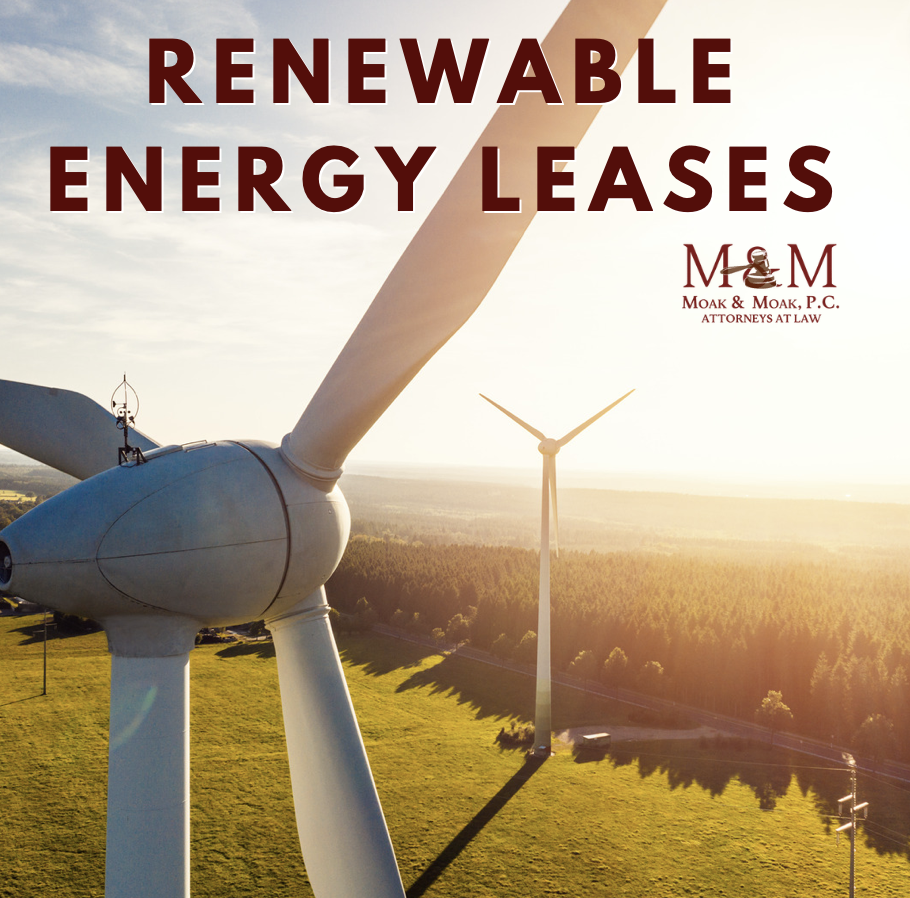Have you driven across the Panhandle of West Texas recently? White wind turbines, the same ones you see going up I-45 through Huntsville, now fill the horizon. This new industry is the renewable energy industry, but commonly referred to as wind and solar energy. Texas has become the largest wind energy producer in the nation, with wind generating capacity of 22,000 megawatts as of the end of 2017. Another new project has been solar power in Texas, many companies are seeking lease land in the Lone Star State. Although Texas is currently only the sixth largest solar energy producing state, this will certainly change in the next few years with Texas expected to triple the current solar capacity by installing approximately 4,000 megawatts of solar capacity.
What does this mean? For Texas landowners, the growth of renewable energy in the state offers the potential for increased and diversified revenue streams for landowners interested in entering into a wind or solar agreement. Relating to my love of old westerns and the open range fights, for landowners not interested in these agreements, the growth of the industry has caused strife and frustration among neighbors. As an example, recently in Van Zandt County, neighboring landowners have found themselves at odds over a proposed solar energy farm, with landowners willing to lease to the company excited about the opportunity and neighboring owners concerned about the potential impact on their own properties.
This week, I will focus on some of legal issues related to renewable energy leases and highlight some of the key terms for landowners considering entering into wind or solar leases. As with oil and gas lease agreements, landowners should consider retaining an attorney who is experienced in negotiating these types of agreements to best protect the landowner’s interest.
In Texas, ownership can be severed into the surface estate and mineral estate. The issue has not been expressly considered by our Texas Supreme Court, but most legal scholars believe both wind and solar rights are part of the surface estate. Currently, both the wind and solar industry have undertaken leases based on them belonging to the surface estate.
Like mineral and groundwater rights, wind and/or solar rights could theoretically be severed from the surface estate and owned by a separate owner. In just the last decade, many Texas landowners have severed wind rights by selling their surface estate but reserving wind rights. Oklahoma has passed laws to prohibit severing wind rights from the surface estate and this could happen in Texas.
The oil and gas industry has over 100 years of laws and legal decisions upon which to draw. Correspondingly, there is relatively little law related to wind and solar energy. Many implied rights have developed over the past 100 years related to oil and gas, like the implied right to use as much of the surface as reasonably necessary to produce oil and gas. This is because the mineral estate is deemed to be dominant when severed. Currently, there is no such implied right with regard to wind or solar estates when severed.
Wind energy agreements, which are between the surface owner of the property and the wind company, can be extremely complex. There are a number of legal and economic issues to be considered by a landowner before entering into this type of agreement.
Matters to consider can include, but are not limited to:
Identification of project phases
• Development phase
• Construction phase
Length of lease
Landowner compensation
Impact on surface uses
Project conclusion requirements
• Removal of equipment
• Restoration of surface
If you are leasing or considering leasing your property for wind or solar energy purposes, you should seek an attorney familiar with these agreements. They can discuss the type of lease and terms that best suit your particular needs and help negotiate the lease agreement.

